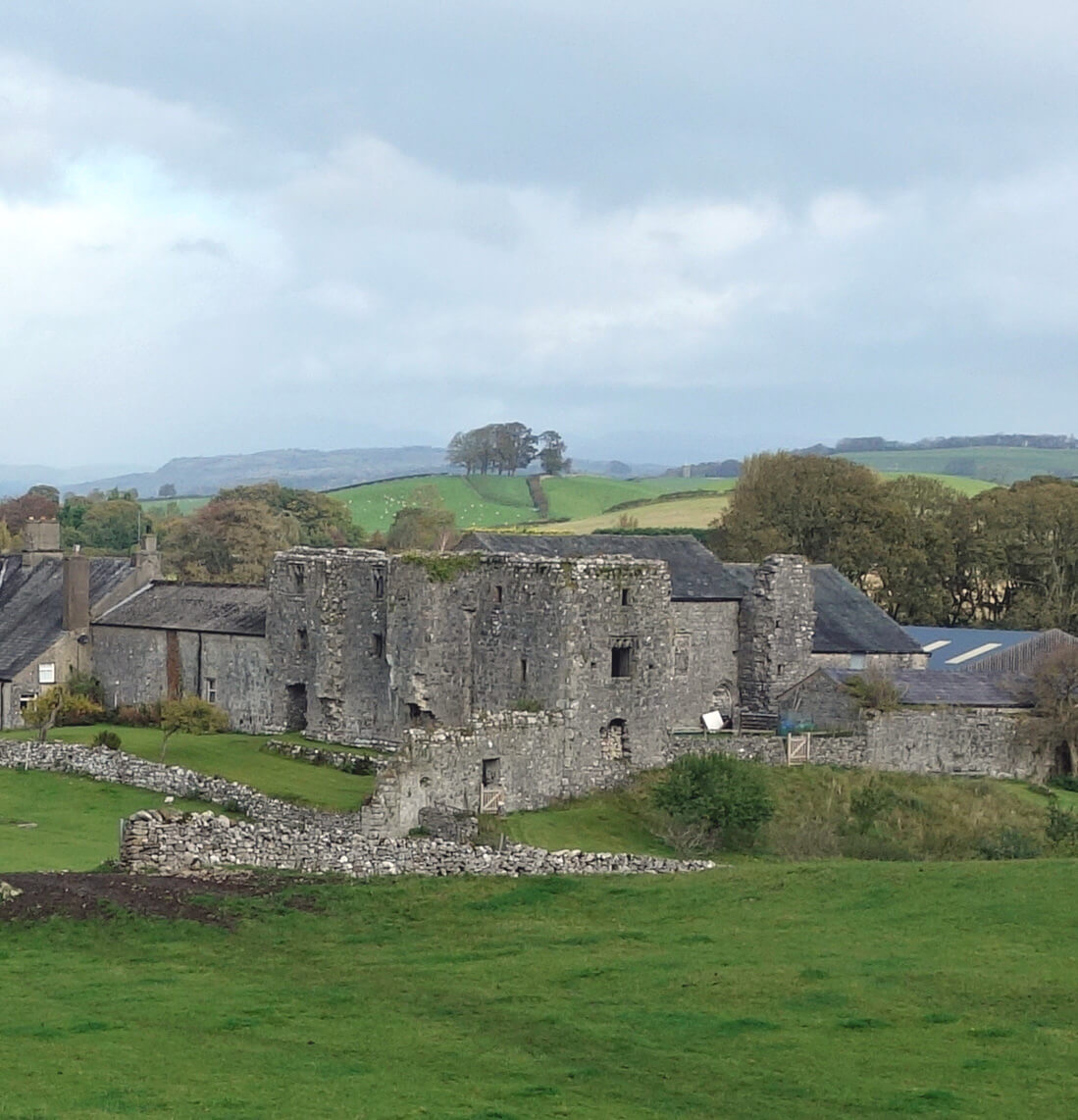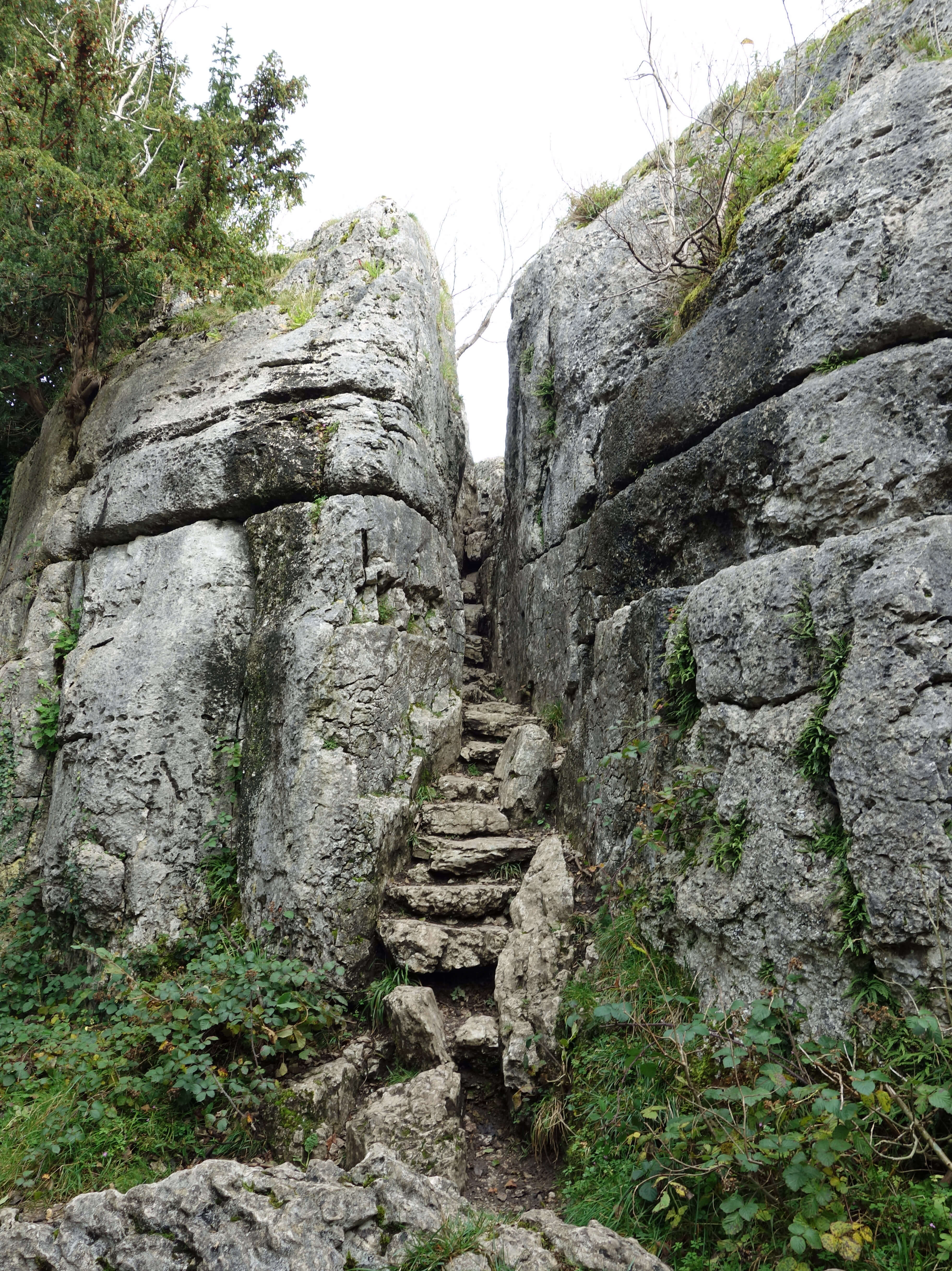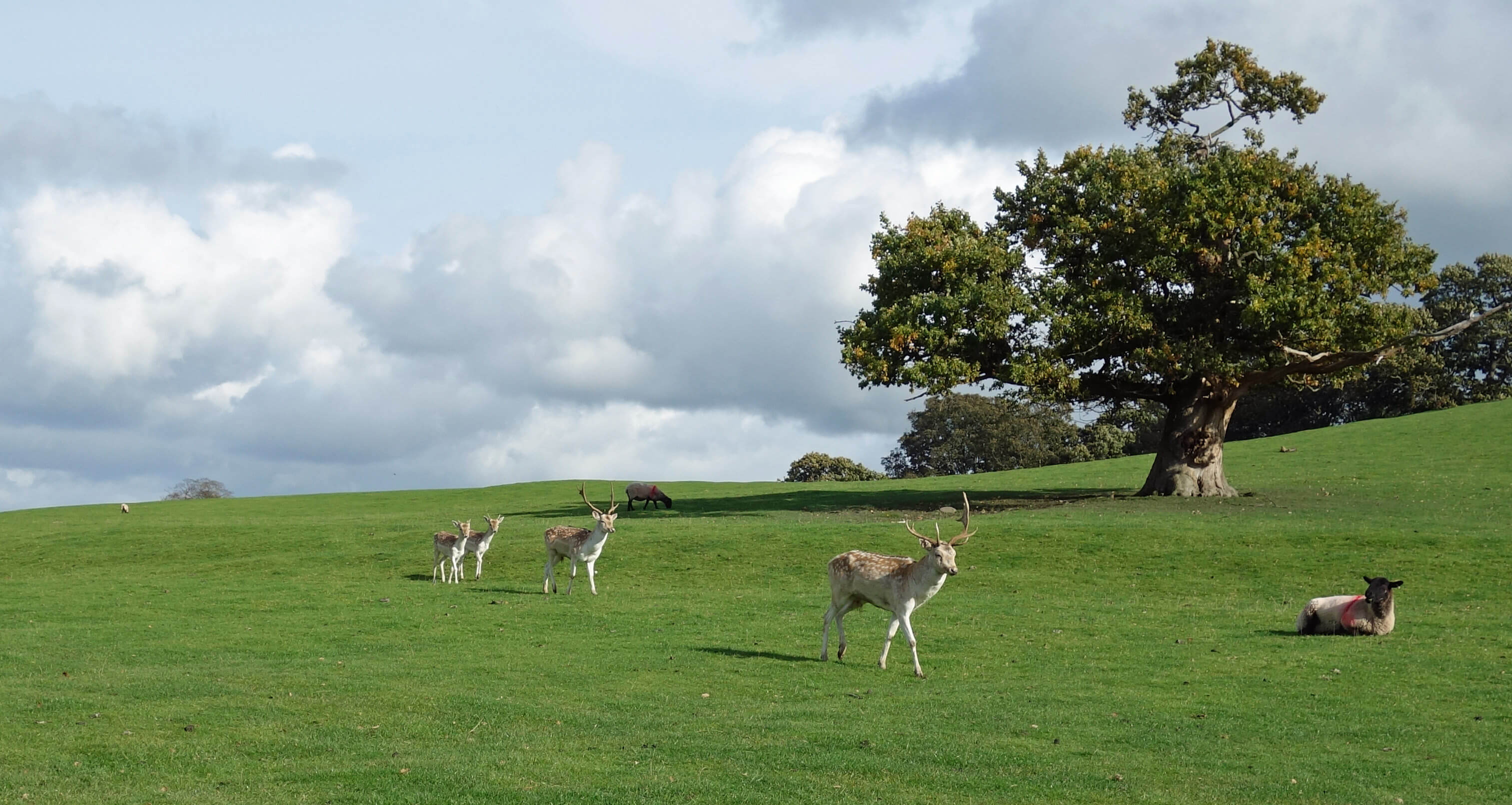
Home
Preamble
Index
Areas
Map
References
Me
Drakkar
Saunterings: Walking in North-West England
Saunterings is a set of reflections based upon walks around the counties of Cumbria, Lancashire and
North Yorkshire in North-West England
(as defined in the Preamble).
Here is a list of all Saunterings so far.
If you'd like to give a comment, correction or update (all are very welcome) or to
be notified by email when a new item is posted - please send an email to johnselfdrakkar@gmail.com.
105. An Autumn Stroll through Beetham Woods
Autumn has arrived, so we went to see some leaves. The leaves are turning and falling, having had enough of 2020.
Haven’t we all?
We walked from Milnthorpe, over the River Bela, and across the Deer Park of Dallam Tower.
I couldn’t immediately think of
another Deer Park in North-West England – at least, not one with deer in it – so we savoured it in
case it is the only one (I remembered Levens Deer Park later). Actually,
we saw only two fallow deer (on the walk south) but many sheep. Between them, they keep the fields trimmer than our garden lawn.

Dallam Tower
From the Deer Park, there’s a view of Dallam Tower, looking remarkably horizontal for a tower. Presumably, there
was once a proper tower. The present building is of the early 18th century and was remodelled in 1826 by the Kendal-based architect
George Webster (1797-1864).
Webster was involved with a great many of the grand halls and churches that were built or re-built in the north-west in the 1820-1850 period, including, for example, Holker Hall, Conishead Priory and Eshton Hall. Beyond Dallam Tower there are views across the Kent estuary to the Lakeland hills.
We walked through Beetham and across fields past the ruins of the 14th century
Beetham Hall,
where there is now a crematorium, as
far as Hale, where we entered the woods that cover the large area of Beetham Fell. Credit where it’s due: whoever is responsible
for signposting the footpaths through these woods has done an excellent job. Without the signposts it would be difficult to
follow woodland paths when there are many leaves on the ground and when walkers’ footsteps cannot establish clear paths
over the limestone. At one point the path crosses sloping limestone grooved with runnels that we can now confidently identify
as karren after our expedition on Hutton Roof Crags (Sauntering 98).
Past Slack Head, we headed for the Fairy Steps, the central feature of these woods. The Fairy Steps form a steep, narrow path
through a limestone outcrop. The
Visit Cumbria website
says that the Steps are on an old corpse road and that coffins were
manhandled up this narrow gap, which, it says, “is hard to believe”. Let me be frank: I don’t believe it. The Steps
can be avoided by following a more manageable path around to the south.
Anyone going to the trouble of bearing a coffin here would have had
more respect for the deceased than to try to lug it up this cleft.
Anyway, where was this corpse road supposed to run? Corpse
roads were to transport the dead from isolated places without burial grounds. The regions west and east of Beetham Fell were hardly
isolated. Did they not have their own churches? I am more inclined to believe in the fairies granting me a wish if
I can get through the passage without touching the sides.


Left: Beetham Hall; Right:
The Fairy Steps.
We walked on through the woods, with the leaves of the trees displaying colours of all shades within the top half of
the rainbow (reds, oranges, yellows, greens). At Hazelslack we were unable to gain a clear view of the ruinous pele
tower of
Hazelslack Tower.
So we walked on across fields and through woods, past Haverbrack to re-enter the Dallam Tower Deer Park.
This time we saw a large herd of deer browsing under trees. Further on, as we reached the crest of the last rise,
four deer (two with antlers, two without) walked over to thank us for our interest in their deer friends and to wish us
a safe journey home. I couldn’t help wondering if we were safe with them. I assumed so since people are free to wander
among the deer and I have never heard of a walker being attacked by a deer – as is not the case for cattle. Recently,
there have been two incidents where walkers have been killed by cows. Sorry, what with the mention of the crematorium
and the coffins, it seems hard at the moment, with the seemingly ever-present threat of covid in
all our minds, to put aside thoughts of our mortality, even during a perfectly pleasant,
unchallenging walk through fine scenery.

Date: October 7th 2020
Start: SD495814, Milnthorpe car park (Map: OL7)
Route: S over River Bela and Deer Park – Beetham – S, SE – Hale – W, N – Slack Head – N, W, SW – Fairy
Steps – W – Hazelslack – N across fields, NE, E – Wray Cottage – NE – Haverbrack – NE across Deer Park - Milnthorpe
Distance: 8 miles; Ascent: 110 metres
Home
Preamble
Index
Areas
Map
References
Me
Drakkar
© John Self, Drakkar Press, 2018-

Top photo: The western Howgills from Dillicar;
Bottom photo: Blencathra from Great Mell Fell






